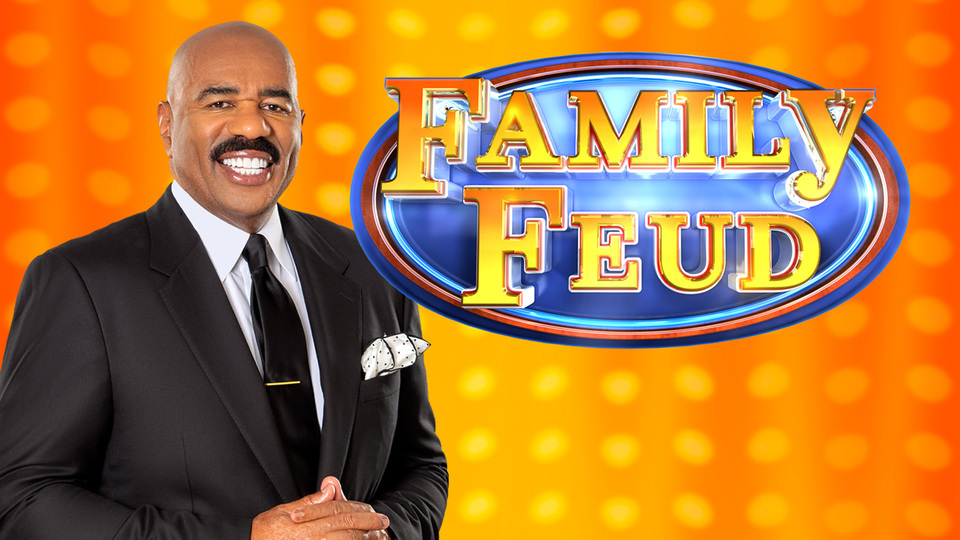
Picture this: the bright lights flash, the crowd buzzes, and the host yells, "Survey says!" That simple phr...
Related Blogs
Family fued
11 minutes, 38 seconds
-0 Views 0 Comments 0 Likes 0 Reviews

The Enduring Reign: A Deep Dive into the Phenomenon of Family Feud
Picture this: the bright lights flash, the crowd buzzes, and the host yells, "Survey says!" That simple phrase hits you like a family reunion—familiar, fun, and full of surprises. The Family Feud game show has hooked viewers for decades with its mix of quick wits and everyday laughs. It started back in the 1970s and keeps pulling in fans today, proving it's more than just one of the best game shows out there.
What makes Family Feud stand out? It's not only the competition but the way it taps into family bonds and what regular folks think. From Richard Dawson's charm to Steve Harvey's comedy gold, the show blends light rivalry with real-life quirks. This article uncovers the Family Feud game show's history, rules, and lasting pull, showing why it remains a TV staple.
The Genesis and Evolution of a Game Show Legend
Family Feud burst onto screens in 1976, created by TV producer Mark Goodson. It quickly became a hit by asking simple questions to 100 people and letting families guess the top answers. Unlike other shows that focused on smarts alone, this one played on gut feelings and common sense.
A Look Back at the Original Concept
Richard Dawson hosted the first run, bringing his smooth style from shows like Hogan's Heroes. The setup was basic: two families faced off, buzzing in to name popular survey responses. Points came from matching answers, not straight cash, which kept things family-friendly.
Early episodes drew big crowds. In its debut season, it averaged over 9 million viewers a night. One fun moment? Dawson's habit of kissing female contestants sparked buzz and even a record for most on-screen smooches. That charm helped the Family Feud game show climb to the top of daytime TV.
The Dark Ages and the Comeback Eras
The show ended in 1985 after nine strong years, but fans missed it bad. ABC canceled it amid changing tastes, yet syndication dreams kept the idea alive. Revivals kicked off in 1988 with Ray Combs at the helm, shifting to nighttime slots for bigger prizes.
Combs hosted until 1994, followed by Louie Anderson and Richard Karn through the late '90s and early 2000s. These years had ups and downs, with ratings dipping during network jumps. Still, each host added flavor—Anderson's warmth, Karn's Home Improvement vibe—keeping "Family Feud hosts" a hot search topic.
The Steve Harvey Renaissance: Modernizing the Feud
Steve Harvey stepped in 2010 and turned things around fast. His quick jokes and reactions to wild answers made episodes pop. Families love his energy; it feels like chatting with a funny uncle.
Under Harvey, viewership soared to 8 million weekly, topping many game shows. The show hit syndication gold, winning Emmys for excellence. Harvey's style—poking fun at silly replies without meanness—revived the fun, making Family Feud the best game show for family watch nights.
Understanding the Gameplay: Rules, Rounds, and the Big Money Round
At its heart, Family Feud game show thrives on prediction. Hosts poll 100 folks for top answers to fun questions like "Name something in your fridge." Families compete to match those hits and rack up points. It's simple, but the pressure builds quick.
Surveying the Board: How the Game Works
Each round starts with a face-off. Two players from rival teams buzz in first to grab the number one answer. The team with the most points controls the board, guessing the rest.
Want a tip? In face-offs, stick to safe, everyday picks. Don't chase weird ideas; the survey favors the obvious, like "beach" for vacation spots. This keeps your team ahead and avoids early strikes.
Rounds fill the board with five top answers. Points multiply by how many surveyed agreed—say, 32 for the top spot. Play two or three rounds to hit 300 points and reach Fast Money.
Navigating Key Rounds: Steal Attempts and Strikes
If the leading team flops, the other side steals by naming an unused answer. They get one shot to match any board spot and snag all the points. Miss, and strikes pile up—three means the round ends.
Strikes add tension; teams sweat as X's light up. A classic steal? In a 2010s episode, one family stole with "toilet paper" on a bathroom question, flipping a 200-point lead. Those moments make Family Feud game show clips go viral on YouTube.
Play builds to 300 points total. Ties? Sudden death with a one-answer question. It's all about team huddles and quick calls under the lights.
Fast Money: The Ultimate Test of Quick Thinking
The endgame stars two players from the winning team. They have 20 seconds each to list five answers per question, aiming for 200 points. Hit it, and you win $20,000; over 300 gets a $30,000 bonus sometimes.
Prizes average $15,000 per episode now, up from early days. The record? A whopping $145,000 in one Fast Money round back in 2019. It's pure adrenaline—contestants buzz through lists like "things that annoy you in traffic," hoping for overlaps.
This round tests family sync. One player sets the base; the second builds on it. Blanks hurt, but wild answers often score big.
The Psychology Behind the Survey Answers
Why do we nail some answers and flop on others? Surveys tap into shared thoughts, like how 42 people out of 100 might say "mom" for "who tucks you in." It's group mind at work.
Why We Predict Certain Responses
People lean on habits. Cognitive shortcuts, or heuristics, push common replies. Think: for "best gift," most pick "cash" over rare stuff.
Psychologist Daniel Kahneman notes how we favor quick, easy ideas in polls. In Family Feud game show, this means safe bets win. A study on public opinions shows 70% of answers cluster on top tropes, like food or family in daily questions.
Spot patterns? Over years, answers skew to basics. This psychology keeps the game fair and fun for all ages.
Top Answers That Define the Show
Iconic ones stick in memory. For "Name something you sleep with," top hits: pillow (obvious), spouse, dog.
Another gem: "Name a job where you wear a uniform." Answers include police officer, nurse, soldier. These pop up often, drawing laughs.
"Name something red" gets apple, fire truck, blood. Such lists fuel SEO searches like "Family Feud top answers" and keep fans quoting episodes.
Beyond the Main Stage: Spin-offs and Global Adaptations
Family Feud game show grew legs with extras. Specials pull in new crowds, mixing stars with the classic format.
The Evolution into Celebrity and Special Editions
Celebrity Family Feud debuted in 2008 on ABC, pitting stars against each other. It amps up laughs with A-listers guessing survey hits.
One viral episode? In 2015, the cast of The Big Bang Theory faced Modern Family stars, raising cash for charity. Viewers tuned in for 9 million, boosting the brand.
These editions target younger fans and holidays. They keep the core rules but add glam, making "Celebrity Family Feud episodes" a top query.
International Versions: Family Feud Around the World
The format spread wide. In Australia, it's Family Feud since 1977, with local twists like Aussie slang questions.
The UK's 1001 Things You Never Knew mirrors it, hosted by Chuckle Brothers in the '90s. The Philippines version runs long, with prizes in pesos and cultural nods, like fiesta themes.
Key differences? Some nations tweak prizes or add team sizes. Yet the survey heart stays true, proving Family Feud's global pull.
Conclusion: The Lingering Appeal of Shared Experience
Family Feud game show endures because it mirrors real life—families clash, laugh, and connect over simple ideas. Everyone relates; we've all got opinions on everyday stuff.
Steve Harvey's reign cements its spot as a top pick among best game shows. His fresh take ensures it stays lively.
In the end, Family Feud will keep families glued to screens. It's more than TV; it's a shared laugh that spans generations. Tune in next time—you might spot your own answer on the board.

